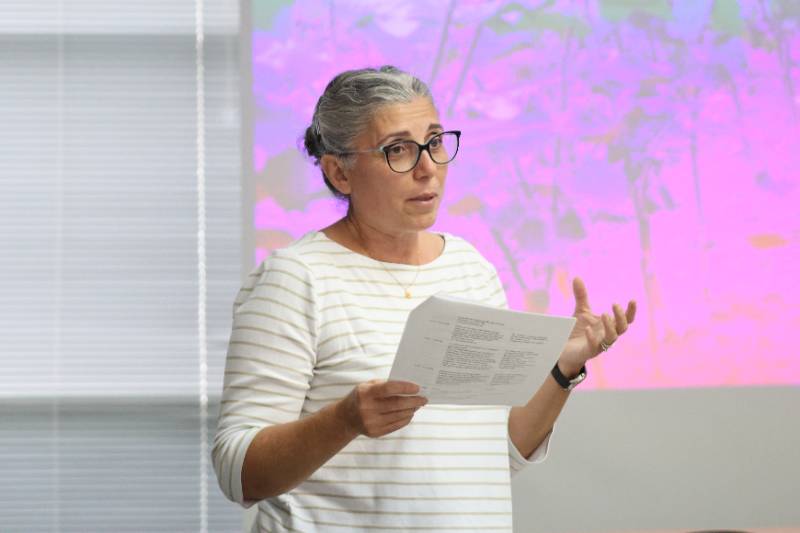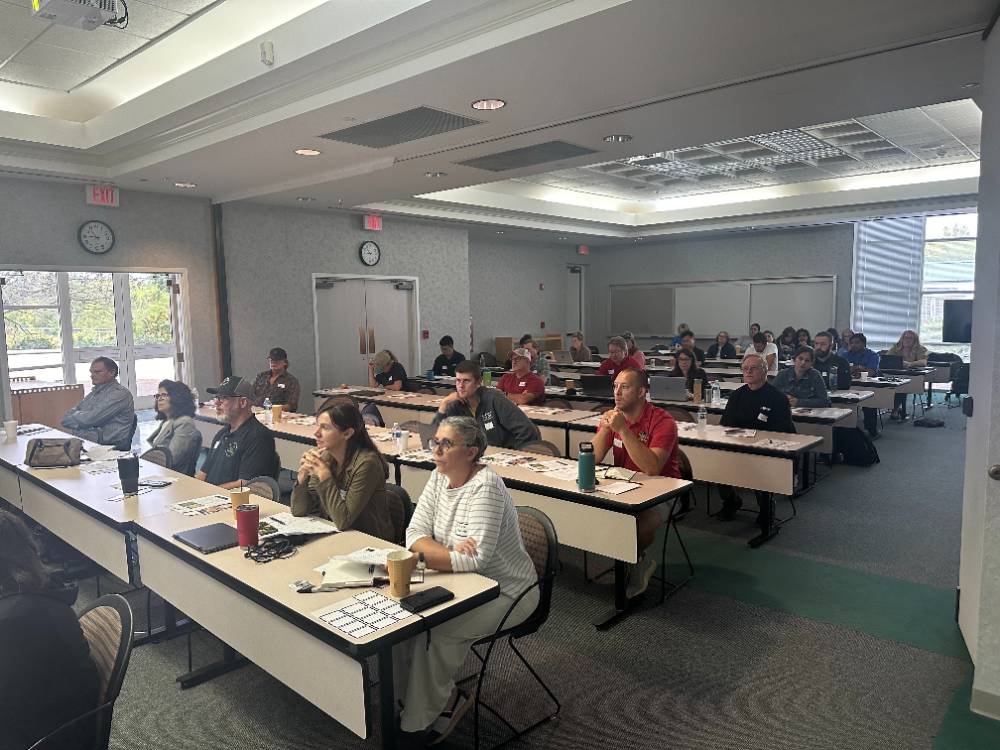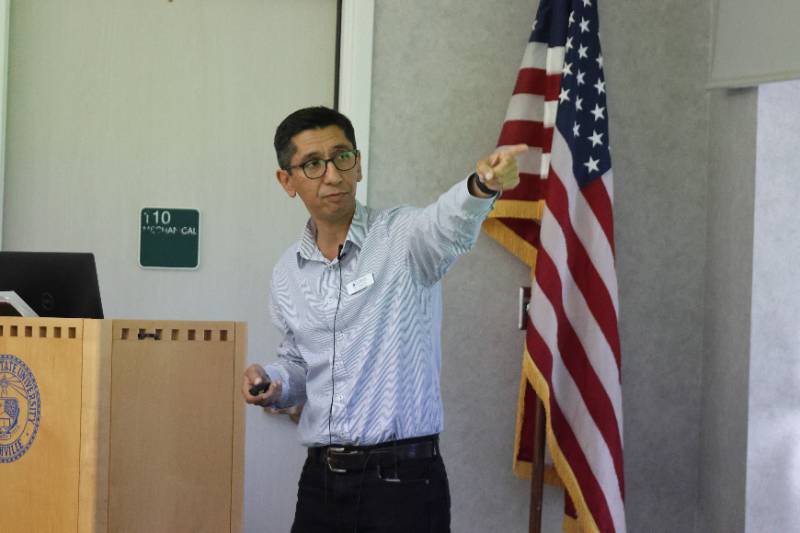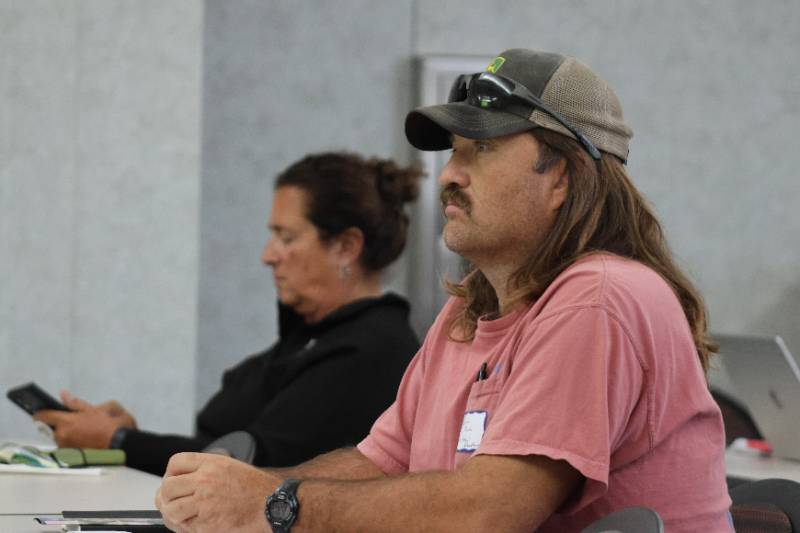- Home >
- College of Agriculture
- > TSU Tackles VSD
The Myth of the Lone Genius
TSUAg takes on VSD with collaborative, transdisciplinary approach
By Charlie Morrison
Popularized in both fiction and the movies, the trope of the solitary scientist alone in their lab fastidiously working away, making discoveries and generally exercising their genius is a fun thought and useful for storytelling but make no mistake, it is a fiction. Real science, especially that of the 21st century, involves collaboration and cooperation, connection and communication.

In October, science of the collaborative, communicative kind was on display at the Tennessee State University College of Agriculture’s (TSUAg) Otis L. Floyd Nursery Research Center, where, under the direction of TSUAg Associate Dean for Research and Research Associate Professor Dr. Fulya Baysal-Gurel, a collection of over 80 research scientists, growers, and industry leaders convened an important workshop to combat a pathogen affecting woody ornamental trees called Vascular Streak Dieback (VSD).
What is VSD?
VSD is essentially a disease that causes browning, wilting, and tissue damage to more than 25 ornamental and woody plant genera in Tennessee and in five other states across the country. Eastern redbud, maple and dogwood the top three genera that are being affected by the disease, which could be connected to the fungus Ceratobasidium theobromae that has been consistently associated with vascular tissue of nursery stock showing symptoms of stunted growth, burnt and blighted leaves, vascular ‘streaking’ and poor root development.
VSD was first discovered in woody ornamental plants in the state in 2019, when the Tennessee Department of Agriculture (TDA) received an infected redbud sample. Soon after that discovery, in 2020, the team from TSUAg that included Baysal-Gurel, Dr. Farhat Avin, a number of graduate assistants and in 2021 then-post-doctoral researcher Dr. Prabha Liyanapathiranage, now the TDA’s State Plant Pathologist, began their own research on the issue.
The Collaboration
Even at that early stage, the science was collaborative, with Baysal-Gurel's team attacked the issue as a group. Dr. Baysal-Gurel and her team published their research extensively over the successive years and their hard work on the issue put them in the position to take a leadership role on the issue throughout the country. Dr. Baysal-Gurel herself traveled extensively across the country to speak on the issue, even making an appearance at the U.S. Capitol to explain the nature of the VSD issue.

In furthering their research, Dr. Baysal-Gurel and her team began to build a multi-state transdisciplinary team of researchers and extension specialists with vast experience in woody ornamental plant pathology, diagnostic, fungal and population genetics, breeding, plant physiology, plant production systems, and agriculture economics.
The group later formalized those connections by acquiring a grant from the USDA’s National Institute for Food and Agriculture (NIFA), a Specialty Crops Research Initiative project, titled “Planning a Solution: A Partnership to Identify Research and Extension Priorities for Vascular Streak Dieback (VSD) in Woody Ornamental Crops.”
The Process
The grant mandated a two-step process for the project: First, the group would conduct a thorough, nationwide needs assessment survey of nursery growers, regulatory agencies, state agriculture leaders and research and Extension personnel from VSD-affected areas. Secondly, the grant provided for many of these scientists and stakeholders to make the trip to Tennessee for the workshop, which was held on Oct. 1 and Oct. 2. The goal of the workshop and the project was ostensibly to determine where to direct further research.

The workshop brought more than 50 stakeholders to the Floyd Nursery Research Center auditorium, with an additional audience of more than 30 participating via Zoom. The group proceeded through a packed agenda of presentations, question-and-answer sessions and group discussions on the origins of VSD, the biology of the issue, the economic impact, innovative management strategies... the meeting was an all-encompassing discussion of an issue conducted with the best traditions of the modern-day scientific method.
“The industry was heavily impacted by this one single issue. We needed a timely involvement in the project, to investigate the situation, identify the problem and develop management recommendations for the growers to help them reduce damage on their production,” said Dr. Baysal-Gurel.
“Growers are well aware of their needs, the USDA NIFA, us, everyone is aware of this problem and they all got together with our scientists. They believe in these scientists and extension professionals and they trust us, we would like to solve this problem together, it’s a huge team effort,” she continued.
Next Steps
Having navigated the difficult early hurdles of establishing a coalition to study the issue, and determining how to pursue further studies, the working group is primed to continue the pursuit of an answer to VSD, as a group. The final discussion topic of the workshop was built around finding funding to continue the effort. The group will pursue a number of funding avenues to continue, particularly a farther-reaching grant to allow the collective research collaboration to continue.
As far as the scientific next steps, TSUAg researchers are currently developing a molecular tool that is being vetted by other institutions that if demonstrated to be successful, could amplify detection efforts in plants.

Additionally, the TSU team is also conducting cultivar screening trials to identify the tolerance of redbud species and cultivars to VSD, as this information is crucial for initiating breeding programs to obtain hybrids with promising horticultural characteristics and increased resistance to VSD. The TSU team is continuing with the cultivar screening, including more redbud species, cultivars, and hybrids received from different regions, to identify VSD resistance.
“Coming from a diagnostic background, I love to solve puzzles. You have a package in front of you and it’s like a puzzle so you are putting pieces together to understand what is causing that problem,” said Baysal-Gurel. “This is the same thing, except it’s a puzzle that will take me personally 10 or more years to solve. I’s not only my success, this is a team’s success though.”


